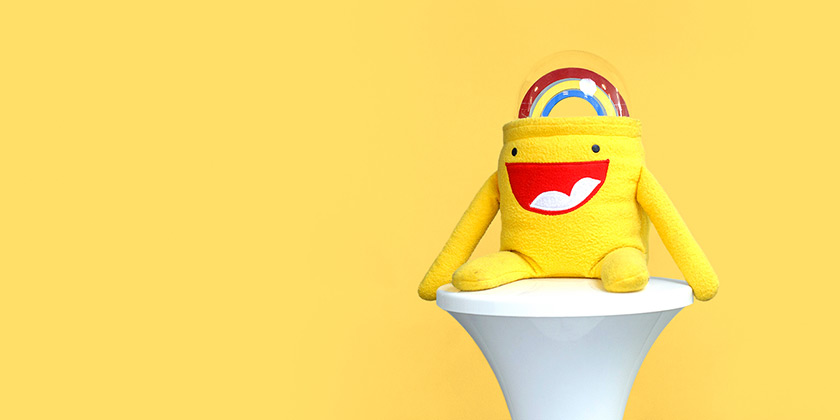Change is hard. It is often so big that it’s hard to distinguish between disaster and opportunity, be that in our everyday lives or in a wider business sense. But taking a risk is necessary in order to pivot, adapt, innovate and grow. Amid everything that is happening in the world, we need to be constantly offering new experiences to our users to match their problems and needs. Businesses that are able to pivot, change and then appear in customers lives in new and innovative ways, and at just the right time, are able to last longer by resetting customer expectations.
Depending on what type of business you are, you are either having to make a temporary change or a fundamental pivot. Maybe this future we are in is the new future. We have to think strategically, react, and change business models, services and experiences.
How are we going to create new or amplified experiences that are notably different from our competitors in order for us to stand out? How do we find our customers’ greatest needs at times of change and then create things that meet these needs?
A great example of a company rethinking its operations is on-demand ride service Alto, based in Dallas, Texas. The company made a quick decision to shift its drivers, vehicles and navigating algorithms to help Scripx, a Dallas-based virtual pharmacy delivering subscriptions to those staying at home. Alto is also delivering food and on-demand meals from restaurants.
COVID-19 has sparked a major social and technological transformation that is happening before our eyes. After we go back to work nothing will be the same. Businesses will not be the same, which is why we must start designing the future today. I feel like this whole pandemic is pushing us into our inevitable technological future. Businesses are now being forced remote. Our Government has been running a digital Parliament. We are likely to see an acceleration towards e-government. The digitisation of healthcare. Online, video consultations are becoming routine practice for NHS frontline staff wherever possible.
Online retail has grown rapidly too, with training courses and entertainment services all increasing. Businesses now have a big opportunity to create omnichannel business models that combine digital and face-to-face offerings, meaning these services will carry on into the non-COVID world.

Hotels are having to change the way they do business too. Guests and travellers are going to be looking for a safer, cleaner stay wherever they are booking. Hotels are going to have to demonstrate to guests that they have implemented new and improved health and safety practices. How do we achieve this? Enhanced transparency around how the spaces have been cleaned is a simple enough measure and a genuine user need. The American Hotel and Lodging Association has launched an initiative called StaySafe. Hilton Hotels are implementing the new CleanStay programme where room seals are being put onto doors to show the room has been cleaned with additional measures.
Virtual check-in services could be implemented in order to save time and reduce human contact. Contactless can now be implemented across the hotel experience from check-in to payments, and even turning on lights in hotel rooms. The simplest way could be to use virtual assistants in every room, or apps that allow us to control it all, from check-in to room lights. Low touch solutions, where possible, will limit the amount of viral transmission.
One of China’s largest online retailers, JD.com, has successfully utilised autonomous vehicles to deliver food, medicine and other supplies in Wuhan. On their website they say they have transported more than 2.36 million medical and epidemic prevention supplies, including masks, medical gloves, goggles, disinfectants and other products to major hospitals in Wuhan.

Technology is enabling us to rethink the ways in which we perform fundamental activities during this crisis. What if we could use technology to do so much more? It could help us be better, faster, more productive, and most importantly, improve people's lives.
Remote collaboration is now becoming commonplace. I mean, even my technologically illiterate mum and dad are hosting weekly Zoom quizzes. The time apart has actually made us come closer together as a family unit, if only digitally at the moment.
We can’t let this crisis go to waste and miss this opportunity to leverage the abundant collaborative energy. Innovation has to be top of the list for strategic long term goals. Smart investments into innovation work best when it is strategic and focused on user problems and impact.

Communities need to be at the centre of defining a problem and helping create solutions. All too often, end-users aren’t at the heart of understanding a problem and solving it. Human-centred design and workshop principles allow us to design solutions and engage end-users. It is a skill-set, a mind-set, and a process that can result in true digital transformation.
Today’s solutions are a result of yesterday’s problems. Let’s make sure we’re better positioned to provide solutions for tomorrow’s problems. Check out our Digital Transformation services page to find out how we can help your business.
Harry is hosting a series of free online workshops over the coming weeks. Learn about design sprints, problem framing, growth hacking and more. Check these out at campus.kyan.com.



